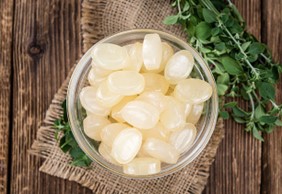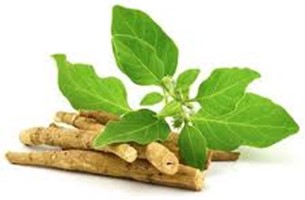Abstract
Withania somnifera, also known as ashwagandha, is a traditional Ayurvedic herb with a long history of use. Its potential health benefits—which include immune system support, stress reduction, and cognitive enhancement—have spurred interest in combining it with other supplements. Of them, ashwagandha lozenges have come to light as a practical and possibly useful delivery system. The goal of this work is to present a thorough analysis of the formulation, effectiveness, and bioavailability.
Keywords
Withania somnifera, Withaferin A, Rasayana
Introduction
Ashwagandha, sometimes referred to as winter cherry or Indian ginseng, is a well-liked adaptogenic herb that is well-known for its capacity to support general wellbeing and assist the body in reducing stress. Ashwagandha has been utilized for ages in Ayurvedic medicine, but in recent times, its possible medicinal benefits have drawn a lot of interest. Thanks to developments in formulation techniques, ashwagandha can now be found in a variety of forms, such as lozenges, powders, teas, and capsules. Ashwagandha lozenges are a tasty and practical way to take the herb, since they make it simple to administer and absorb through the oral mucosa. For millennia, ashwagandha has been a part of traditional medicine, especially in Ayurvedic medicine. Many health benefits of ashwagandha have been found in contemporary studies, targeting different bodily systems. It is still early in the study process, so more work is required to prove its therapeutic uses and determine the best dosages and times to utilize it. It's also important to carefully evaluate Ashwagandha's safety, particularly when taking it in combination with other drugs or supplements. Further studies and clinical trials are necessary to fully comprehend the possible advantages and disadvantages of ashwagandha as a medicinal agent. With so many new studies coming out, it's critical to keep our understanding of ashwagandha up to speed, emphasizing both its potential for disease treatment and its safe use. Despite encouraging data that supports Known by the botanical name Withania somnifera, ashwagandha is a widely used herb in Ayurvedic medicine. It is a little shrub that is a member of the Solanaceae family. It may help with various ailments, but its main usage is as a nervine tonic, which calms the nerves. Indian winter cherry or Indian ginseng are other names for ashwagandha. The rasayana (tonic) properties of ashwagandha are well-known. Rasayana is a herbal or metallic mixture that promotes happiness and a youthful physical and mental state of health. In arid parts of South Asia, Africa, and Central Asia, ashwagandha is grown. It has been possible to separate more than fifty chemical components from various ashwagandha plant sections. Oral forms of solid pharmaceuticals include tablets, powders, capsules, cachets, and capsules. The fact that each of these dosage forms contains a specific amount of medication that is delivered as a single unit has led to their collective designation as solid unit dose forms. Even when it comes to sustained action preparations, which in theory include quantities comparable to numerous regular dosages. Conversely, at now, tablets and capsules account for well over two thirds of the overall number and cost of pharmaceuticals produced globally. This is brought about by the strict formulation specifications of contemporary drugs, the many benefits of tablets and capsules, the growth of the health services industry, and the demand for large-scale, cost-effective manufacturing. Traditional solid dosage forms like tablets have numerous benefits over Tablets are the most often used dose form, utilized in over 70% of all pharmaceuticals. Tablets came in a range of sizes, forms, and weights depending on the therapeutic contents and the intended mode of administration. The fundamental components that are often found in tablets, the methods of preparation, and the numerous types of tablets. The word “Lozenges” is derived from French word “Lozenges” which means a diamond shaped geometry having four equal sides Lozenges And Pastilles have been developed since 20 century in pharmacy and are still under commercial production. Lozenges historically have been used for the relief of minor sore throat pain and inntation and have been used extensively to deliver topical aesthetics and anti bacterial.

- Lozenges are medicinal dosage forms with flavors that are meant to be swallowed and held in the throat or mouth. They often include one or more medications in the sweetened hash form. Lozenges are used to relieve oropharyngeal symptoms, which are frequently brought on by local infections. If the medication is adequately absorbed through the buccal linings or when it is eaten, they may also have a systemic effect. Medicated lozenges are often made using compression and molding procedures, primarily with acacia or gelation using sugar and pastilles as the basis ingredients.
- Lozenges are used for both drugs intended to be given gradually to produce a consistent level of drag in the oral cavity and to bathe the tissues of the throat in a portion of the drag and for patients who are unable to swallow solid oral dosage forms. Analgesics, cosmetics, antimicrobials, antiseptics, antitussives, aromatics, astringents, corticosteroids, decongestants, and demulcents are among the medications frequently used in lozenges. Depending on the demands of the individual patient, lozenges with one or more ingredients can be made.
- Lozenges have two effects: one localized one at a specific location within the oral cavity, and another systemic one where the drug reaches the bloodstream and manifests its pharmacological action. For example, some multivitamin lozenges and lozenges containing vitamins C and D contain B Complex, and lozenges containing nicotine are intended to help people quit smoking. More recently, it has been demonstrated that lozenges with one or more components can be created specifically for chronically ill patients, creating a patient-friendly dosing form.

Formulation and Ingredients :
Standardized plant extract is commonly found in ashwagandha lozenges, guaranteeing constant concentrations of bioactive substances such withanolides. To improve taste and stability, additional additives could include flavorings, binding agents, and natural sweeteners. The dosage, release profile, and sensory characteristics of ashwagandha lozenges are all taken into account throughout the formulation process, which is critical to both their effectiveness and consumer acceptability.

Bioavailability and Absorption:
Solubility, permeability, and mucosal absorption are some of the characteristics that affect the bioavailability of ashwagandha chemicals found in lozenges. Lozenges have an advantage over other supplement formulations in that they can be directly absorbed through the oral mucosa, avoiding the gastrointestinal tract and possibly increasing bioavailability. Although there haven't been many studies assessing the pharmacokinetics of ashwagandha lozenges, more research is necessary to maximize efficacy and delivery.
Consumer Acceptance and Market Trends:
A few key elements that impact consumer sentiments toward ashwagandha lozenges are flavor, convenience, perceived efficacy, and price. The demand for natural and herbal therapies is increasing, according to market trends, which is spurring innovation in product composition and marketing tactics. In order to establish credibility and confidence in the market, consumer education, open labeling, and clinical validation are essential.
Clinical Studies:
Numerous clinical investigations have examined the effectiveness of supplementing with ashwagandha in different forms, such as extracts, powders, and capsules. Although there isn't much study on ashwagandha lozenges particularly, results from studies on other formulations point to possible advantages for immunological support, stress reduction, anxiety management, and cognitive performance. To assess the relative effectiveness of ashwagandha lozenges and their long-term impact on health outcomes, more clinical trials are required.
MECHANISM OF ACTION:
The various bioactive components of ashwagandha, such as withanolides, alkaloids, and flavonoids, are responsible for its pharmacological effects. The mechanisms of action encompass immunological modulation, antioxidant activity, neurotransmitter regulation, and the modulation of stress hormones like cortisol and adrenaline. Because of the distinctive way that ashwagandha is delivered, lozenges may have specific benefits for mucosal immunity and oral health, which calls for further research into the herb's local and systemic mechanisms of action.
Safety and Side Effects:
If ashwagandha is taken within the prescribed dosage levels, it is usually well tolerated. However, adverse reactions, sleepiness, and upset stomach are possible side effects that could happen, especially if excessive doses or long-term use are involved. Pure ingredients, allergy labeling, and interactions with drugs or pre-existing medical problems are some of the safety factors for ashwagandha lozenges. Maintaining consumer confidence and product safety requires strict adherence to quality control procedures and regulatory requirements.
CONSUMER ACCEPTANCE AND MARKET TRENDS:
A few key elements that impact consumer sentiments toward ashwagandha lozenges are flavor, convenience, perceived efficacy, and price. The demand for natural and herbal therapies is increasing, according to market trends, which is spurring innovation in product composition and marketing tactics. In order to establish credibility and confidence in the market, consumer education, open labeling, and clinical validation are essential.
CONCLUSION AND FUTURE DIRECTIONS:
Ashwagandha lozenges offer a viable way to consume the health benefits of this traditional plant in a tasty and simple way. Although studies on ashwagandha lozenges are still in their infancy, what is known so far points to possible benefits for immune system support, stress reduction, and cognitive function. To further confirm the therapeutic potential of ashwagandha lozenges, future research should concentrate on refining formulation, increasing bioavailability, and clarifying mechanisms of action. It is imperative that manufacturers, researchers, and regulatory bodies maintain their ongoing partnership to guarantee product quality, safety, and effectiveness in fulfilling consumer demands.
REFERENCES
- Abbas SS, Singh N. Anti-stress Agents (Herbs) of Indian Origin - Herbal Drugs, A twenty first century perspective. Delhi: Institute of Nuclear Medicine and Allied Sciences, Defence Research and Development Organization (DRDO), Govt. of India; 2006. pp. 578–591. [HERE]
- Abbas SS, Singh V, Bhalla M, Singh N. Clinical Study of Organic Ashwagandha in cases of Parkinsonism, Neuropathy, Paralysis and Uterine Tumours (Fibroids and other tumours) including Cutaneous Endodermal Carcinoma; Proc., National Seminar on “Eco-friendly Herbs of Ayurveda in Healthcare of Mankind: A Strategy for Scientific Evaluation an Uniform Standardization” - Lucknow; 2004. p. 81. [HERE]
- Abbas SS, Bhalla M, Singh N. Proc workshop on essential medicines, adverse drug reactions and therapeutic drug monitoring. Lucknow: Scientific Convention Centre; 2005. A clinical study of Organic Ashwagandha in some cases of uterine tumors (fibroids) and dermatofibrosarcoma; pp. 143–144. [HERE]
- Abdel-Magied EM, Abdel-Rahman HA, Harraz FM. The effect of aqueous extracts of Cynomorium coccineum and Withania somnifera on testicular development in immature Wistar rats. J Ethnopharmacol. 2001;75:1–4. [PUB MED] [HERE]
- Archana R, Namasivayam A. Antistressor effect of Withania somnifera. J Ethnopharmacol. 1999;64:91–93. [PubMed] [HERE]
- Atta-ur-Rahman, Samina-Abbas, Dur-e-Shahwar, Jamal SA, Choudhary MI, Abbas S. New withanolides from Withania spp. Journal of Natural Products. 1991;56:1000–1006. [HERE]
- Begum VH, Sadique J. Effect Of Withania-Somnifera On Glycosaminoglycan Synthesis in Carrageenin-Induced Air Pouch Granuloma. Biochemical Medicine and Metabolic Biology. 1987;38(3):272–277. [PubMed] [HERE]
- Bhandari CR. Ashwagandha (Withania somnifera) “Vanaushadhi Chandroday” (An Encyclopedia of Indian Herbs) Vol. 1. Varanasi, India: CS Series of Varanasi Vidyavilas Press; 1970. pp. 96–97. [HERE]
- Bhattacharya SK, Goel RK, Kaur R, Ghosal S. Anti - stress activity of Sitoindosides VII and VIII. New Acylsterylglucosides from Withania somnifera. Phytother Res. 1987;1:32–37. [HERE]
- 10. Bhattacharya SK, Kumar A, Ghosal S. Effects of glycowithanolides from Withania somnifera on animal model of Alzheimer's disease and perturbed central cholinergic markers of cognition in rats. Phytother Res. 1995;9:110–113. [HERE ]
- Budhiraja RD, Sudhir S. Review of biological activity of withanolides. JSIR. 1987;46:488–491. [HERE]
- Changhadi Govardhan Sharma, author. Ashwagandharishta - Rastantra Sar Evam Sidhyaprayog Sangrah - Krishna-Gopal Ayurveda Bhawan (Dharmarth Trust) Nagpur: 1938. pp. 743–744. [HERE]
- Charak Samhita 6000BC, author. Charaka translation into English: Translator: Shree Gulabkunverba Ayurvedic Society. Jamnagar, India: 1949. [HERE]
- Dekosky S, Scheff SW. Synapse loss in frontal cortex biopsies in Alzheimer's disease: correlation with cognitive severity. Ann Neurol. 1990;27:457–464. [PubMed] [HERE]
- Dickon TC, Vickers JC. The morphological phenotype of b-amyloid plaques and associated neuritic changes in Alzheimer's disease. Neuroscience. 2001;105:99–107. [PubMed] [HERE]
- https://www.dabur.com/ayurveda/ayurvedic-medicinal-plants/ashwagandha
- https://www.istockphoto.com/photos/lozenges


 Gaurav Navnath Nigade *
Gaurav Navnath Nigade *
 Durvankur Santosh Chorghe
Durvankur Santosh Chorghe
 Priyanka Yewale
Priyanka Yewale



 10.5281/zenodo.12702656
10.5281/zenodo.12702656